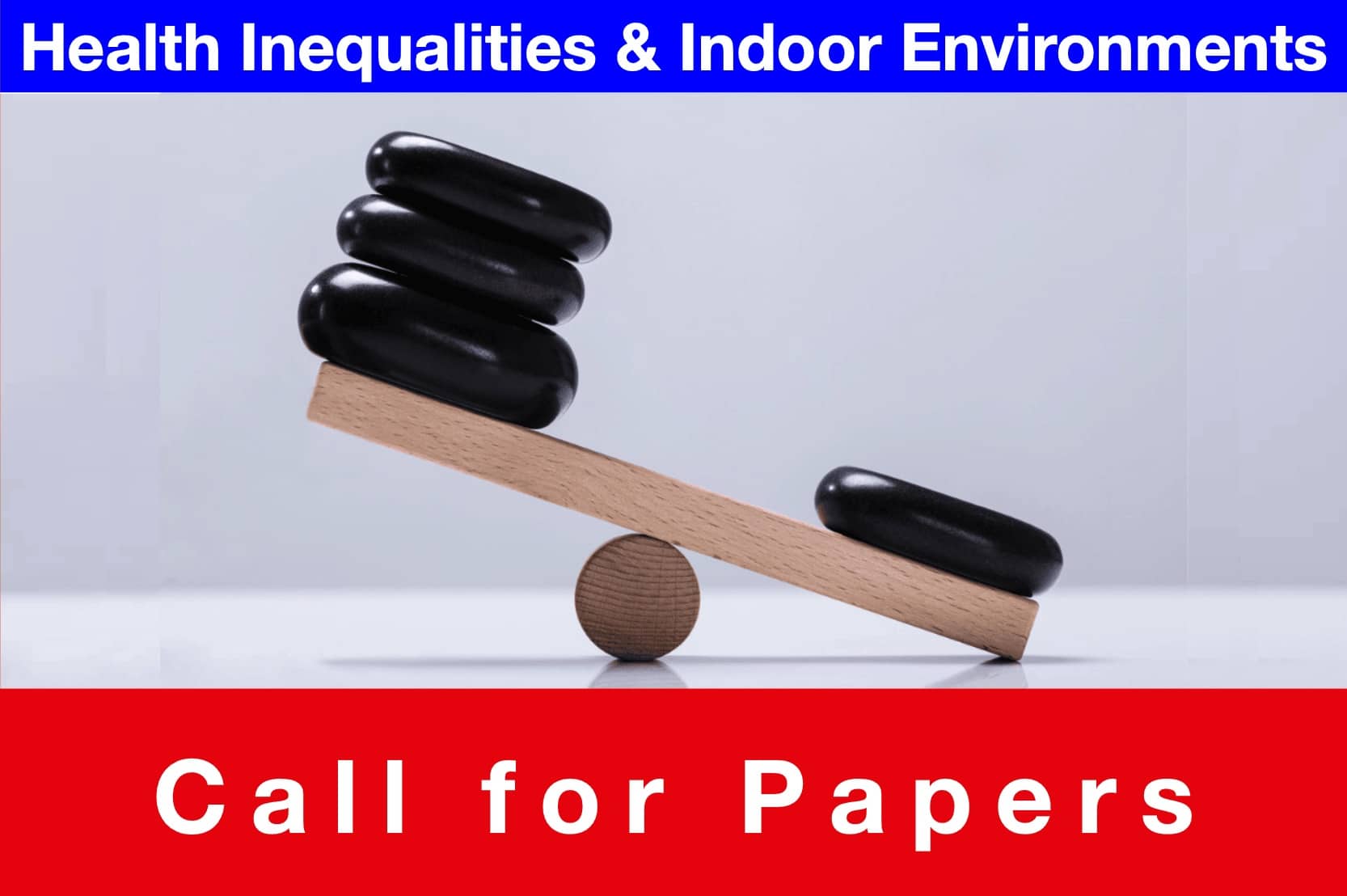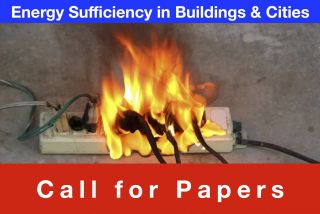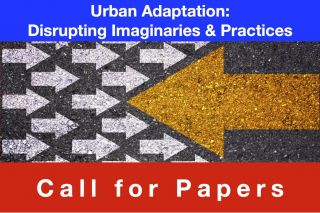
www.buildingsandcities.org/calls-for-papers/health-inequalities-indoor.html
Health Inequalities and Indoor Environments

Guest Editors: Anna Mavrogianni and Marcella Ucci (University College London)
Abstract submission closed on 12 JULY 2023
The aim of this special issue is enhance our understanding of the roles that indoor environments play in creating, exacerbating or ameliorating the underlying socioeconomic and health inequalities in the context of climate change. What are the optimum pathways to fulfil the societal need of access to healthy indoor environments for all (e.g. homes, workplaces, schools, etc)?
Background / context
The indoor environment is a key modifier of environmental exposures, for example, to heat/cold and air pollutants, and a magnifier of existing inequalities and inequities in energy, fuel, resources, health and wellbeing worldwide (Vardoulakis et al. 2015). A key focus for indoor environments is factors related to indoor environmental quality (IEQ), such as temperature, air quality, sound, light etc. Whilst the relationship between the social determinants of health and environmental conditions has been widely recognised in recent decades, thus far most research and policy efforts have focused on the outdoor environment, in particular ambient air pollution mitigation.
The Covid-19 pandemic is a stark reminder of the pressing social imperative to create healthy indoor environments, especially for those most at need, and exposed structural disadvantages faced by the most at-risk groups (Rosenthal et al. 2020). The 2020 Marmot Review stressed the need to bring together the agendas of climate change resilience, air pollution mitigation and social determinants of health and health equity (Marmot et al. 2020), which has also been reflected in the work of other authors at different scales (AlWaer et al. 2021, McPhearson et al. 2022). Given their complex interrelationships, IEQ factors (i.e. thermal, visual, acoustic, air quality characteristics) should not be viewed and studied in isolation. It is also important that we reflect on the historical evolution of concepts of health and wellbeing in relation to the built environment (at various scales), how these have changed over time (Rohde et al. 2020).
Globally, a positive association exists between social deprivation and exposure to harmful air pollutants (Hajat et al. 2015). This could be due to lower income households living in higher outdoor pollution areas, using solid fuels for cooking or heating particularly in the Global South, and substandard housing characterised by dampness and mould, lack of hygiene and sanitation, high smoking rates, overcrowding (Tunstall 2015), furnishings that off-gas dangerous contaminants, and limited ventilation potential due to design and/or perceptions of an unsafe neighbourhood (Ferguson et al. 2021).
Global climate change projections predict increases in the frequency and severity of extreme weather events (heatwaves, storms, flooding, etc) which will exacerbate inequalities and inequities worldwide, both across and within countries. Other climate change-driven changes in temperature and precipitation could also deteriorate ambient air pollution (ozone and particulate matter), in turn potentially increasing the ingress of heat and air pollutants indoors. The countries that have been least responsible for historically producing greenhouse gas emissions, many of them located in the Global South, are likely to be worst hit by climate change effects, such as excess heat (Althor et al. 2016). A vicious circle exists whereby underlying inequalities result in disproportionate climate change induced adverse effects for socially and geographically disadvantaged groups, thus further aggravating inequalities (Ebi and Hess, 2020). Socially deprived households are more likely to live in regions facing drought and water scarcity, flood prone areas and colder, damp homes they are unable to heat (winter fuel poverty), have limited access to energy retrofit opportunities (retrofit poverty), live in overheating prone homes in urban heat island hotspots with lower quantity and quality of green and blue infrastructure (Hsu et al. 2021), and have limited cooling means (summer fuel poverty). Low-income individuals are also likely to be exposed to heat stress due to their occupation or daily tasks they routinely perform (e.g. outdoor labour).
In order to mitigate climate change, building stocks and neighbourhoods are expected to undergo significant transformations in order to improve their energy efficiency, reduce their heating/cooling needs and associated carbon emissions. However, there are significant knowledge gaps around the optimum pathways for equitable and effective building retrofit that does not compromise occupant health and wellbeing.
Suggested topics
This Special Issue will present state-of-the-art research across geographic and climate contexts, both in the Global South and Global North, on the positive or negative role that the indoor environment (e.g. home, workplace or school) plays in social equity and human health and wellbeing. We welcome multi- and trans-disciplinary perspectives that offer an in-depth understanding of complex sociotechnical dynamics that drive inequalities and inequities in the built environment, whilst maintaining a robust foundation in engineering-led indoor environment science. Contributions should enable fundamental advances in the scientific understanding of:
- the main factors affecting inequalities and inequities in indoor environmental exposures, and their effects on human health and wellbeing, under a changing climate
- systems for identifying and monitoring areas of high risk
- optimum pathways and policies to create healthy, safe indoor environments for all
Potential topics could focus on a specific scale of the indoor environment (building scale, neighbourhood scale and the indoor/outdoor interface, regional scale) or examine cross-cutting areas. They include but are not limited to:
- Exposure assessment at the indoor/outdoor
continuum
• Understanding the complex and variable nature of human exposures to harmful environmental factors, e.g. excess temperature (heat/cold) and pollutants at the indoor/outdoor continuum
• Novel synthesis and data linkages of existing indoor-outdoor environmental and population datasets - IEQ assessment at the building level
• New data or analysis, in the context of inequalities, of indoor environmental exposures across or within building types, geographic regions, in relation to characteristics that stratify health opportunities and outcomes (e.g. place of residence, socioeconomic status, demographic data, etc.)
• Development of novel monitoring, metrics and frameworks for IEQ or fuel poverty assessment that embeds socioeconomic characteristics and inequalities
• Risk perception, awareness and behaviour change in relation to indoor environmental exposures across vulnerable groups
• Tensions between environmental sustainability and health agendas - Regional analyses
• Comparative studies and statistical analysis of inequalities and environmental exposures as modified by indoor settings at the regional level, and with a focus on vulnerable groups
• Comparative studies of spatial variations in inequalities and environmental exposures across and within geographic areas
• Building stock levels analysis of different types of inequalities/inequities related to the built environment: space inequalities (e.g. overcrowding) and the ways these may intersect with IEQ, winter and summer fuel poverty, access to green infrastructure
- Meta-analyses and identification of
knowledge gaps
• Critical analysis of the ways in which indoor environments/buildings, are incorporated in existing reviews on inequalities, including in systematic reviews of health-driven primary research
• Reframing environmental exposure factors, such as building quality, as environmental inequality - Policies, tools, instruments and
frameworks
• Policy-relevant tool development for the identification and assessment of built environment factors affecting inequalities, including the development of IEQ or fuel poverty indicators
• Asset and portfolio management tools to identify key issues with IEQ parameters across several buildings (e.g. homes, workplaces or schools), and thus prioritise interventions to reduce inequalities accordingly.
• Policies and strategies (including financial mechanisms and planning assessments) aiming to reduce inequalities related to indoor environments
• Policy evaluation studies
• Case studies, for example on grassroots initiatives such as community-led housing design and retrofit schemes, or nature-based solutions, through an equity lens
Briefing note for contributors
You are invited to submit an abstract for this special issue. Please send a 500 word (maximum) abstract to editor Richard Lorch by 12 JULY 2023. Your submission must also include these 3 items:
• the author's and all co-author's names,
institutional & departmental affiliations and contact details
• the specific question(s) in this Call for
Papers that the abstract and intended paper address
• the abstract (500 words maximum) defining
the research question(s), scope, methods and (expected) results
Abstracts will be reviewed by the editors to ensure a varied, yet integrated selection of papers around the topic. Authors of accepted abstracts will be invited to submit a full paper (6000-7500 words), which undergoes a double-blind review process.
Open access
Buildings & Cities is an open access journal and has an article processing charge (APC) of £1200. If you do not have institutional support, please notify the editor when submitting your abstract. B&C endeavours to assist those without funding.
Buildings & Cities
Buildings & Cities is an international, open-access, double-blind peer-reviewed research journal. Its focus is the interactions between buildings, neighbourhoods and cities by understanding their supporting social, economic and environmental systems. More information can be found online: www.buildingsandcities.org & published papers are found here: https://journal-buildingscities.org
Questions?
If you have a question, please contact: Richard Lorch , Anna Mavrogianni or Marcella Ucci
Timeline
| Deadline for abstract submission | 12 July 2023 |
| Full papers due | 12 Jan 2024 |
| Referees' comments to authors | 15 April 2024 |
| Referees' comments to authors | 13 May 2024 |
| Publication | July 2024 |
References
Althor G., Watson J.E.M. & Fuller R.A. (2016). Global mismatch between greenhouse gas emissions and the burden of climate change. Nature Scientific Reports, 6. doi.org/10.1038/srep20281
AlWaer H., Speedie J. & Cooper I. (2021). Unhealthy neighbourhood "syndrome": a useful label for analysing and providing advice on urban design decision-making? Sustainability 13, 6232. doi.org/10.3390/su13116232
Ebi K.L. & Hess J.J. (2020). Health risks due to climate change: Inequity in causes and consequences. Health Affairs, 39(12), 2056-2062. doi.org/10.1377/hlthaff.2020.01125
Ferguson L., Taylor J., Zhou K., Shrubsole C., Symonds P., Davies M. & Dimitroulopoulou S. (2021). Systemic inequalities in indoor air pollution exposure in London, UK. Buildings and Cities, 2(1): 425-448. doi.org/10.5334/bc.100
Hajat A., Hsia C. & O'Neill M.S. (2015). Socioeconomic disparities and air pollution exposure: a global review. Current Environmental Health Reports, 2, 440-450. doi.org/10.1007/s40572-015-0069-5
Hsu A., Sheriff G., Chakraborty T. & Manya D. (2021). Disproportionate exposure to urban heat island intensity across major US cities. Nature Communications 12, 2721. doi.org/10.1038/s41467-021-22799-5
Marmot M., Allen J., Boyce T., Goldblatt P. & Morrison J. (2020). Health Equity in England: The Marmot Review 10 Years On. Institute of Health Equity. health.org.uk/publications/reports/the-marmot-review-10-years-on
McPhearson T., Cook E.M., Berbés-Blázquez M., Cheng C., Grimm N.B., Andersson E., Barbosa O., Chandler D.G., Chang H., Chester M.V., Childers D.L., Elser S.R., Frantzeskaki N., Grabowski Z., Groffman P., Hale R.L., Iwaniec D.M., Kabisch N., Kennedy C., Markolf S.A., Matsler A.M., McPhillips L.E., Miller T.R., Muñoz-Erickson T.A., Rosi E. & Troxler T.G (2022). A social-ecological-technological systems framework for urban ecosystem services. One Earth 5(5): 505-518. doi.org/10.1016/j.oneear.2022.04.007
Rohde L., Larsen T.S., Jensen R.L. & Larsen O.K. (2020). Framing holistic indoor environment: Definitions of comfort, health and well-being. Indoor and Built Environment 29(8): 1118-1136. doi:10.1177/1420326X19875795
Rosenthal D.M., Ucci M., Heys M., Hayward A. & Lakhanpaul M. (2020). Impacts of COVID-19 on vulnerable children in temporary accommodation in the UK. The Lancet, 5(5), E241-242. doi.org/10.1016/S2468-2667(20)30080-3
Tunstall B. (2015). Relative housing space inequality in England and Wales, and its recent rapid resurgence. International Journal of Housing Policy, 15:2, 105-126. doi.org/10.1080/14616718.2014.984826
Vardoulakis S., Dimitroulopoulou C., Thornes J., Lai K.M., Taylor J., Myers I., Heaviside C., Mavrogianni A., Shrubsole C., Chalabi Z., Davies M. & Wilkinson P. (2015). Impact of climate change on the domestic indoor environment and associated health risks in the UK. Environment International. 85: 299-313. doi.org/10.1016/j.envint.2015.09.010
Latest Peer-Reviewed Journal Content
Designing for pro-environmental behaviour change: the aspiration–reality gap
J Simpson & J Uttley
Lifetimes of demolished buildings in US and European cities
J Berglund-Brown, I Dobie, J Hewitt, C De Wolf & J Ochsendorf
Expanding the framework of urban living labs using grassroots methods
T Ahmed, I Delsante & L Migliavacca
Youth engagement in urban living labs: tools, methods and pedagogies
N Charalambous, C Panayi, C Mady, T Augustinčić & D Berc
Co-creating urban transformation: a stakeholder analysis for Germany’s heat transition
P Heger, C Bieber, M Hendawy & A Shooshtari
Placemaking living lab: creating resilient social and spatial infrastructures
M Dodd, N Madabhushi & R Lees
Church pipe organs: historical tuning records as indoor environmental evidence
B Bingley, A Knight & Y Xing
A framework for 1.5°C-aligned GHG budgets in architecture
G Betti, I Spaar, D Bachmann, A Jerosch-Herold, E Kühner, R Yang, K Avhad & S Sinning
Net zero retrofit of the building stock [editorial]
D Godoy-Shimizu & P Steadman
Co-learning in living labs: nurturing civic agency and resilience
A Belfield
The importance of multi-roles and code-switching in living labs
H Noller & A Tarik
Researchers’ shifting roles in living labs for knowledge co-production
C-C Dobre & G Faldi
Increasing civic resilience in urban living labs: city authorities’ roles
E Alatalo, M Laine & M Kyrönviita
Co-curation as civic practice in community engagement
Z Li, M Sunikka-Blank, R Purohit & F Samuel
Preserving buildings: emission reductions from circular economy strategies in Austria
N Alaux, V Kulmer, J Vogel & A Passer
Urban living labs: relationality between institutions and local circularity
P Palo, M Adelfio, J Lundin & E Brandão
Living labs: epistemic modelling, temporariness and land value
J Clossick, T Khonsari & U Steven
Co-creating interventions to prevent mosquito-borne disease transmission in hospitals
O Sloan Wood, E Lupenza, D M Agnello, J B Knudsen, M Msellem, K L Schiøler & F Saleh
Circularity at the neighbourhood scale: co-creative living lab lessons
J Honsa, A Versele, T Van de Kerckhove & C Piccardo
Positive energy districts and energy communities: how living labs create value
E Malakhatka, O Shafqat, A Sandoff & L Thuvander
Built environment governance and professionalism: the end of laissez-faire (again)
S Foxell
Co-creating justice in housing energy transitions through energy living labs
D Ricci, C Leiwakabessy, S van Wieringen, P de Koning & T Konstantinou
HVAC characterisation of existing Canadian buildings for decarbonisation retrofit identification
J Adebisi & J J McArthur
Simulation and the building performance gap [editorial]
M Donn
Developing criteria for effective building-sector commitments in nationally determined contributions
P Graham, K McFarlane & M Taheri
Join Our Community

The most important part of any journal is our people – readers, authors, reviewers, editorial board members and editors. You are cordially invited to join our community by joining our mailing list. We send out occasional emails about the journal – calls for papers, special issues, events and more.
We will not share your email with third parties. Read more



Latest Commentaries
COP30 Report
Matti Kuittinen (Aalto University) reflects on his experience of attending the 2025 UN Conference of the Parties in Belém, Brazil. The roadmaps and commitments failed to deliver the objectives of the 2025 Paris Agreement. However, 2 countries - Japan and Senegal - announced they are creating roadmaps to decarbonise their buildings. An international group of government ministers put housing on the agenda - specifying the need for reduced carbon and energy use along with affordability, quality and climate resilience.
Building-Related Research: New Context, New Challenges
Raymond J. Cole (University of British Columbia) reflects on the key challenges raised in the 34 commissioned essays for Buildings & Cities 5th anniversary. Not only are key research issues identified, but the consequences of changing contexts for conducting research and tailoring its influence on society are highlighted as key areas of action.